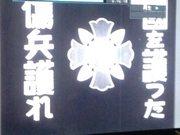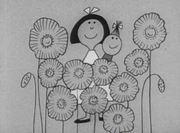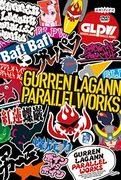The Forest Doctor and the Warrior in a White Coat: Review of the Charming Characters and Inspiring Story

The Doctor of the Forest and the Warrior in a White Coat - Mori no Oisha to Hakuino Yuushi■ Public Mediatheater ■ Original MediaAnime Original ■ Release date1939 ■ Number of EpisodesEpisode 1 ■ ProductionProduced by Sato Film Productions Produced by Ginjiro Sato ■ Story The squirrel driver takes the white-robed hero to the forest in his carriage. The monkey doctor and rabbit nurse give him special treatment, and the hero's wounds are completely healed. In celebration, the animals in the forest sing and dance. The hero returns home, thanking everyone. ■ Main staffProduced by Sato Film Productions Produced by Ginjiro Sato ■ Background and history of the workIn 1939, Japanese animation was still in its infancy, and the techniques and methods of expression were very different from today. The Doctor in the Forest and the Warrior in White Coats is a short animated film produced by the Sato Film Productions and completed under the direction of Ginjiro Sato. This work is a symbol of the development of Japanese animation before the war, and reflects the social conditions and culture of the time. Sato Film Productions was one of the few animation production companies in prewar Japan, and Ginjiro Sato was a central figure. Many of his works were not just entertainment for children, but also contained social messages, and this film is one of them. In prewar Japan, animation was still a new medium, and attempts to explore its possibilities continued. ■ Story details and analysisThe story of "The Doctor and the Warrior in White" begins with a squirrel driver bringing a warrior in white to the forest. The warrior is wounded, and the monkey doctor and rabbit nurse treat him. Thanks to their unique treatment, the warrior's wounds are completely healed, and the animals in the forest sing and dance in celebration. The warrior leaves the forest expressing his gratitude. It is a simple but moving story. The story depicts the spirit of "mutual help" and "gratitude" in prewar Japanese society. The hero is a warrior, implying he was wounded in battle, but he recovers with the help of the animals in the forest. This scene reflects the value of "community" held by the Japanese at that time. Also, the characters of the monkey doctor and the rabbit nurse symbolize the respect and trust in medical care at that time. Furthermore, through the new medium of animation, this work also plays an educational role in teaching children the importance of "helping each other" and "gratitude." Many educational animations were produced in Japan before the war, and this work is one of them. ■Character AnalysisThe main characters of this work are the white-robed warrior, the squirrel driver, the monkey doctor, and the rabbit nurse. Each character plays an important role in advancing the story. The white-robed warrior is a battle-scarred warrior and the central character of the story. His character symbolizes courage and strength, but at the same time, he has a weakness that requires help. Through this character, viewers can understand both "strength" and "weakness" and learn the importance of helping each other. The squirrel driver takes the hero to the forest. Although the squirrel is a small animal, he acts to help the hero. This character conveys the message that "even small power can play a big role." The monkey doctor and the rabbit nurse are responsible for treating the warrior's wounds. The monkey doctor has knowledge and skill, while the rabbit nurse has kindness and dedication. These two characters symbolize the respect and trust in medical professionals. Their treatment methods are unique, giving viewers a fresh surprise. ■ Animation techniques and expressionsAnimation technology in 1939 was very limited compared to today, but this film succeeds in effectively telling the story with that limited technology. In particular, the movements and expressions of the forest animals bring out the charm that can only be achieved by hand-drawn animation. Color also plays an important role in this work. Prewar Japanese animation had a limited use of color, but this work uses the limited colors effectively to beautifully depict the natural scenery of the forest. In particular, the contrast between the white robes of the warriors and the green of the forest makes a strong visual impression. Music and sound are also important elements that enhance the story. In the scene where the animals in the forest sing and dance, the music plays a role in enhancing the emotions of the viewer. The use of music and sound was still in its infancy in prewar Japanese animation, but this work shows its potential. ■ Social impact and evaluation"The Doctor in the Forest and the Warrior in a White Coat" is a work that had a great impact on prewar Japanese society. In particular, it played an educational role for children, spreading the spirit of "mutual help" and "gratitude." This work is a symbol of the development of Japanese animation before the war, and had a great influence on the development of Japanese animation thereafter. This work reflects the social situation and culture of the time. In prewar Japan, communal values were important, and the spirit of mutual help and gratitude was emphasized. This work succeeds in conveying those values through the new medium of animation. This work also shows the talents of Sato Film Productions and Sato Ginjiro. Their works are not just entertainment for children, but many of them also contain social messages, and this work is one of them. Prewar Japanese animation was still a new medium, and attempts to explore its possibilities continued, and this work shows those possibilities. ■ Work evaluation and recommendation"The Doctor in the Forest and the Warrior in a White Coat" is a work that symbolizes the development of prewar Japanese animation and has had a major impact on the subsequent development of Japanese animation. The work is praised for its simple yet moving story and animation techniques that effectively convey the story despite limited technology. It is also highly regarded for its educational role for children, spreading the spirit of "helping each other" and "gratitude." I recommend this film for the following reasons. First, it is an important work in understanding the development of prewar Japanese animation. This is a must-see for anyone interested in the history and culture of animation. Second, this film plays an educational role for children. It will be useful for anyone who wants to learn about the spirit of "mutual help" and "gratitude." Finally, this film shows the potential of animation technology. This film will be useful for anyone interested in the technology and expression of animation. For these reasons, I recommend "The Forest Doctor and the White Coat Warrior" to anyone who wants to understand the development of prewar Japanese animation, anyone looking for a work that can serve an educational role for children, and anyone interested in the possibilities of animation technology. |
<<: Nyan no Urashima: A thorough review of the cat's adventures and touching story
>>: Swim Swim Animal Swimming Meet: Fun and moving review
Recommend
Masashi Kishimoto: It was only after he finished writing Naruto 15 years ago that he realized the way of comics
Recently, netizens exposed a previous interview o...
The appeal and reviews of Gaiking: Legend of Daiku-Maryu: A thorough explanation of the legendary robot anime
Gaiking: Legend of Daiku-Maryu ■ Public Media TV ...
"White Sand Aquatope": A thorough review of the beautiful world of an aquarium and its story of growth
"White Sand Aquatope": A story of the s...
"Black Panther" director mourns Boseman: He is a grand fireworks display
Recently, Chadwick Boseman, the actor of the movi...
The appeal and reviews of "ToHeart2ad": A moving experience that fans must see
The appeal and reviews of "ToHeart2 ad"...
The official trailer for Lego Marvel Avengers Code Red will be released on October 27th
Today (October 24), the official trailer of the a...
"Godzilla vs. Kong 2: Rise of an Empire" released the final trailer and will be released on March 29
Today (March 26), "Godzilla vs. Kong 2: Rise...
Aika-chan's Earth: A thorough review of the touching story and character depth
Aika-chan's Earth - Aika-chan's Earth ove...
6th in film history! Avatar 2's global box office has exceeded 2 billion US dollars
"Avatar 2" has reached a new milestone ...
Mari Okada's new animated film "I Want to Cry, I Put on a Cat Mask" official trailer released on June 5
The official trailer and poster of the new animat...
'Mybridge's Threads' review: A moving story and beautiful images
"Muybridge's Threads": A visual poe...
Famous voice actor Kotono Mitsuishi is very nervous about her first TV drama "Scientific Investigation Girl"
Kotono Mitsuishi (Auntie) is a well-known voice a...
Sonic the Hedgehog 2: The Movie 4K Blu-ray Release Special Addendum Short Animation Released
Today, November 23, the 4K Blu-ray version of &qu...
The unknown "Minna no Uta": its appeal and reputation
A song that nobody knows - daremo shiranai "...
ThreeZero Ultraman 1/6 Armored Zero Action Figure is priced at $149
Recently, the famous model manufacturer threezero...









